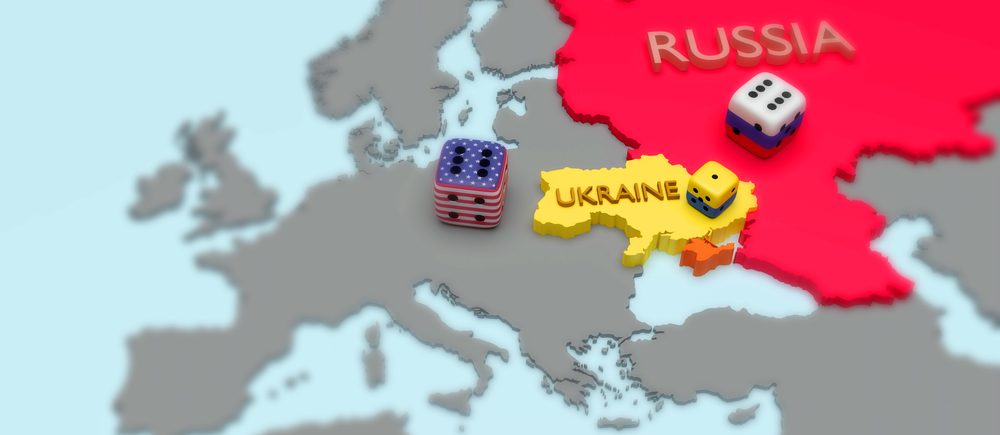The US State Department said that more Russian troops, not fewer, are on the Ukraine border and they’re moving concerningly into fighting positions. However, they say there is still room for diplomacy unless they make the decision to go in.
The latest Ukrainian intelligence report shows no evidence of Russian withdrawal, the defense minister told Reuters, and that the Russian and separatist forces near Ukraine’s borders are still total around 140,000 personnel, according to Ukrainian minister.
Additionally, NATO’s Stoltenberg said that Russia’s failure to withdraw can be confirmed through commercial satellite imagery
Earlier, the Ukraine foreign minister said that Ukraine officially appealed to UN Security Council to discuss Russian moves towards recognizing so-called republics in eastern Ukraine.
Estonian foreign intelligence service chief says Russia is moving approximately 10 battle groups towards the area near Ukraine, where 100 groups already deployed. Their Foreign Intelligence Service Chief says Russia is “likely” to launch a “limited” military attack against Ukraine, occupying chunks of territory.
Despite the chorus of concerning headlines, the US dollar is on the backfoot following less hawkish than expected Federal Open Market Committee minutes that have revived the bulls on Wall Street. DXY, an index that measures the greenback vs a basket of major rivals, has printed a fresh low for the day of 95.677.
This is the lowest level since Friday, 11 February. The S&P 500 is back to neutral and tinkering on the bullish territory above 4,470.
the sentiment of the global economy deteriorated after Putin’s hostile statements to the West and the United States and his declaration of independence for the Donetsk and Luhansk regions.
Fear spread in the world economy about the imminence of war after the Russian decision, which was followed by the immediate signing of sanctions from the European side, announced by the Latvian Foreign Minister in an urgent statement.
The decline of the Russian ruble extended to a loss of 3.04% against the US dollar.
A journalist from Financial Times said on his account on Twitter that the Russian President, Vladimir Putin, gave his forces the order to enter the Ukrainian regions that had previously declared their independence.
Earlier today, the Turkish Foreign Ministry asked its citizens to leave Ukraine immediately.
This came after Russian President Vladimir Putin announced the official recognition of the separatists and considered them independent regions.
This decision was rejected and mobilized by Western countries and the United States of America.
The Kremlin announced earlier today that President Putin had given an order to normalize relations with the new republics.
Russia’s recognition of Donetsk and Luhansk means these countries can conclude joint defense agreements away from the Minsk Agreement.
This would allow Russian forces to be present inside Ukraine’s borders, and the United Nations said it still recognized Ukraine’s sovereignty, independence, and territorial integrity.
Putin said that Ukraine’s admission to NATO constitutes a threat to Russia, noting many threats surrounding Russia, stressing that Ukraine’s position contains many contradictions between statements and actions.
The Russian President said that today’s meeting of the Federal Security Council to determine the fate of Donetsk and Luhansk after the two republics submitted a request to Russia for official recognition.
In the latest update, Russia’s lower house of parliament voted on Tuesday to approve friendship treaties with two self-proclaimed republics in eastern Ukraine, escalating a crisis with Ukraine and the West.
The friendship treaties, signed into force by Russian President Vladimir Putin, would allow Moscow to build military bases there, build a common defense posture, and strengthen economic integration.
Turkish President Recep Tayyip Erdogan described Russia’s recognition of two breakaway regions in eastern Ukraine as “unacceptable” and called on all parties to respect international law.
The euro’s one-month volatility jumped to a 15-month high on Tuesday, as the single currency was hurt by increased risk aversion amid rising gas prices and escalating tensions in Ukraine.
Russian President Vladimir Putin ordered troops into two breakaway regions in Ukraine, sending the one-month euro volatility index to its highest level since November 2020 as the West pledged sanctions in response to Russia’s moves.
After touching an eight-day low, the euro rose 0.2 percent against the dollar to $1.1331 by 0910 GMT.
German Chancellor Olaf Scholz postponed the Nord Stream 2 gas pipeline certification designed to bring Russian gas to Germany on Tuesday after Russia formally recognized two breakaway regions in eastern Ukraine.
The €10 billion pipelines, which were recently completed but not yet operational, transported 55 cubic meters of natural gas annually from Russia to Europe.
 Noor Trends News, Technical Analysis, Educational Tools and Recommendations
Noor Trends News, Technical Analysis, Educational Tools and Recommendations





